Having a lock on your thermostat can help protect your home from tampering and make sure you family is comfortable all year round. It can also be useful if you have pets or young children who may not understand the proper use of a thermostat.
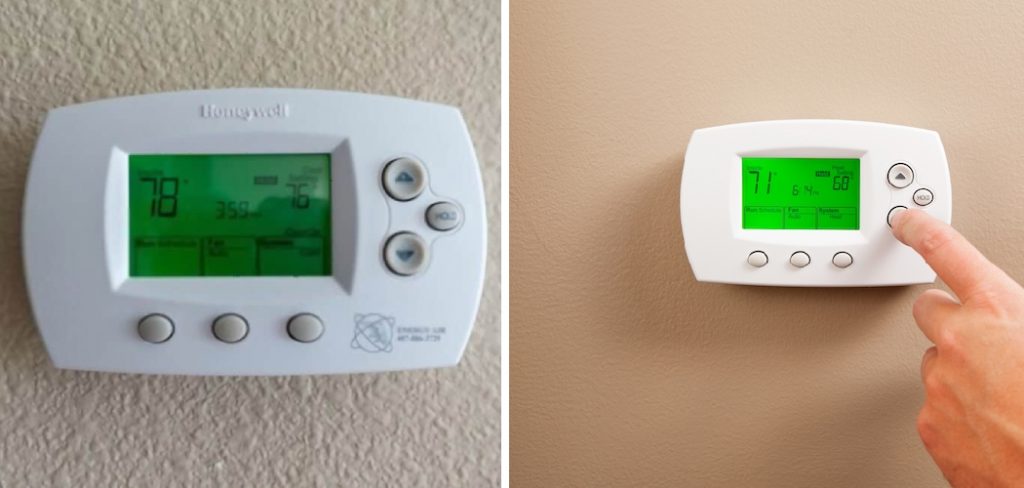
Locking your thermostat will ensure that the settings you’ve chosen remain in place, no matter what changes are made by other people or pets.If you’re looking for a way to lock your thermostat, there are several options available.
The most common option is a keypad lock that can be purchased at most hardware stores. This type of lock will require you to enter a code in order to access the settings on the thermostat. Another option is to purchase a digital thermostat that comes with a lock feature already built in. In this blog post, You will learn in detail how to lock thermostat.
Step by Step Processes for How to Lock Thermostat
Step 1: Inspect the Thermostat
Before locking the thermostat, it is important to inspect it and make sure that all functions are working properly. Look for any signs of damage such as cracked or broken wires and check that all settings are correct.
Step 2: Read the Manual
Reading the manual for your particular model will provide you with detailed instructions on how to lock the thermostat. It is important to follow these instructions carefully and make sure all steps are completed in the right order. The lock feature can usually be found by pressing a button or turning a knob on the side of the thermostat. Depending on your model, it may also be located in a menu that can be accessed through the display.
Step 3: Enter a Code
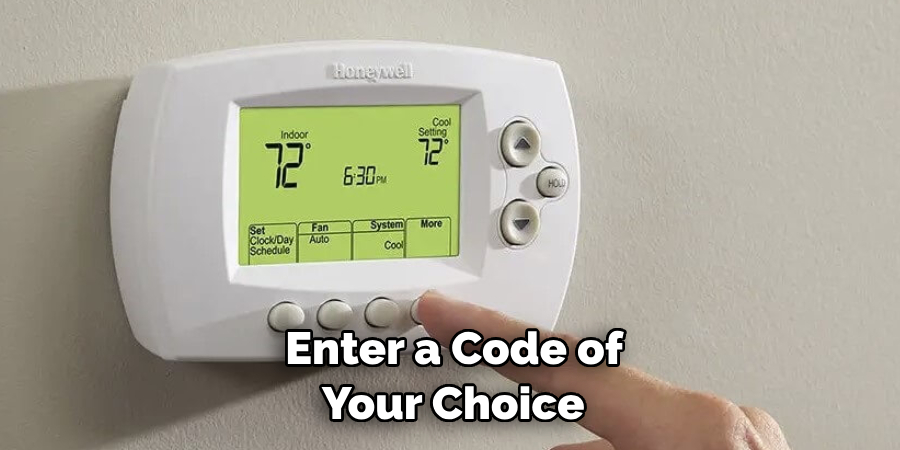
Once you have located the lock feature, enter a code of your choice to activate it. This code should be something that is easy for you to remember but difficult for others to guess in order to maintain the security of your thermostat settings. After entering the code, test the lock feature by attempting to change any of the settings or pressing buttons. If you are unable to do so then the lock has been successfully applied and your thermostat is now secure.
Step 4: Change Code Regularly
It is important to remember to change your code regularly in order to maintain security. This can be done by entering the current code and then following the instructions to enter a new one. Some thermostats may also have other features that can be locked such as scheduling or temperature control. If this is the case then these should be locked in the same way as described above.
Step 5: Re-enter Code Before Adjusting Settings
When you need to adjust the settings of your thermostat it is important to re-enter the code before doing so. This will ensure that no one else can tamper with the settings without knowing the code. It is advisable to check your thermostat periodically to make sure that no one else has tampered with the settings. If you notice any changes then it is important to change the code immediately in order to maintain security.
Step 6: Contact a Professional if Necessary
If you are unable to lock your thermostat or having trouble understanding how to do so, then it is best to contact a professional. They will be able to advise you on the best steps to take in order to ensure your thermostat is secure.
Overall, understanding how to lock a thermostat can help you maintain the security and energy efficiency of your home. By following these simple steps you can ensure that only those with access to the code can adjust the settings of your thermostat.
Tips for How to Lock Thermostat
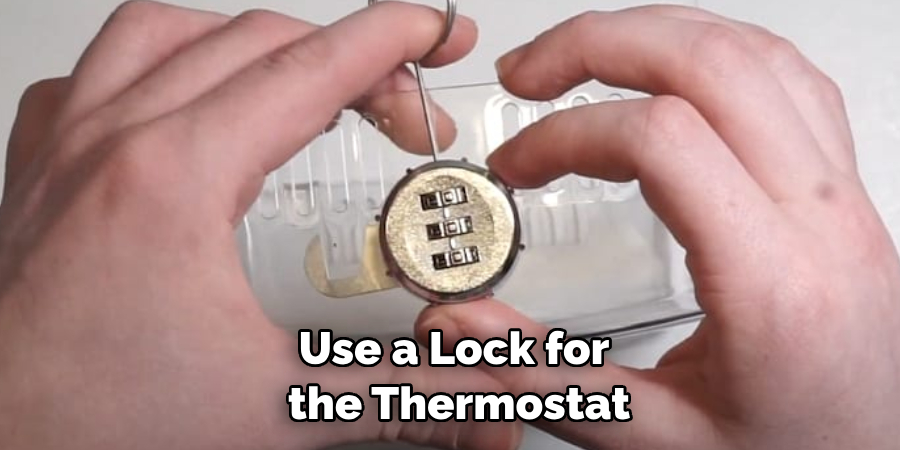
- If you have children in your home, always use a lock for the thermostat. This will prevent them from accidentally changing the temperature setting and wasting energy or potentially creating an unsafe environment.
- Make sure to keep any keys or codes needed to access the thermostat out of plain sight and reach of children. Do not leave them anywhere they can easily access- this will help prevent tampering and misuse of the thermostat.
- If you’re using a programmable thermostat, make sure to double check all settings before locking it. This will ensure that your desired temperature is accurately set each time.
- Make sure to properly install the lock so that it is secure and durable enough to prevent any possible tampering. Do not attempt to install it yourself if you are not sure of the exact procedure as this can lead to damages or malfunctions in your thermostat.
- Periodically check that the lock is still properly installed and functioning correctly. This will ensure that your energy bills remain consistent and that the temperature setting remains secure.
- If you notice any signs of tampering or unusual behavior with your thermostat, act immediately and contact a professional to investigate further. This will help protect your home from any possible damages that could occur due to an unauthorized change in temperature.
Following these tips can help you maintain a safe and comfortable environment for everyone in your home.
What Are Some Common Mistakes That People Make When Locking Their Thermostats?
There are a few common mistakes people can make when they lock their thermostats. One of the most common is not setting the locking code correctly. It’s important to choose a secure code that you won’t forget, as it could be difficult to reset if you do forget it. Another mistake people can make is not checking for air leaks around the thermostat. If there are any air leaks, the temperature in your house could be affected by drafts and cause it to fluctuate.
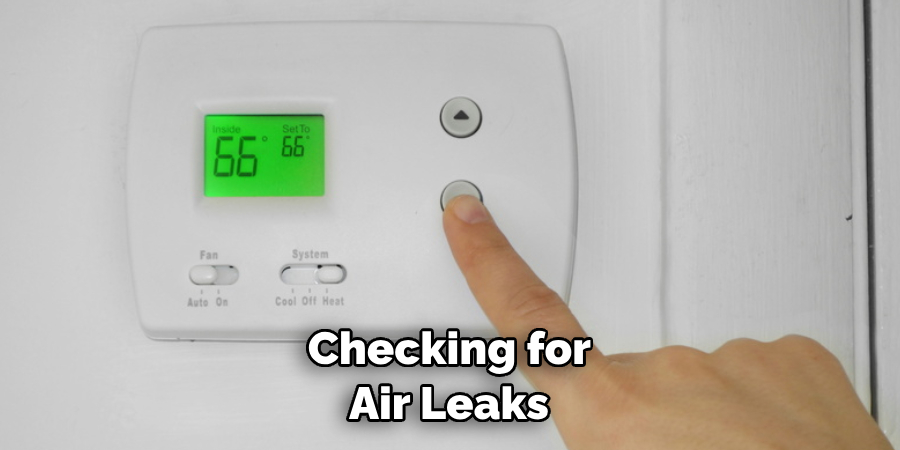
Finally, some people may forget to turn their thermostats off when they leave the house for an extended period of time. To avoid wasting electricity and money, make sure to turn your thermostat off when you don’t need it. It’s also important to remember that locking your thermostat doesn’t guarantee that the temperature won’t fluctuate at all times.
Depending on the weather, you may still experience some fluctuations. To make sure you get a consistent temperature in your home, you should consider investing in an additional heating and cooling system. This will help keep your home comfortable no matter the weather or temperature outside.
Are There Any Special Instructions or Guidelines for How to Lock a Thermostat?
Locking a thermostat is an important step to protect the settings of your system and ensure that it is not tampered with by unauthorized individuals. The process for locking a thermostat will vary depending on the type and model you have, so it’s important to refer to your product manual or contact your local HVAC dealer for exact instructions. Generally, thermostats will include a button or switch for locking the device, often in the form of a keypad or a digital display.
When this is locked, it prevents anyone from being able to change any of the settings on the unit. You may also need to enter a code to unlock the thermostat before making changes. This is especially important in commercial settings, such as office buildings or apartment complexes.
When setting a code for your thermostat, make sure to choose something that is secure but easy enough for you to remember. It’s also a good idea to change the code every few months or so in order to ensure that it remains secure.
How Often Should You Check the Security Settings on Your Thermostat to Make Sure It’s Still Locked?
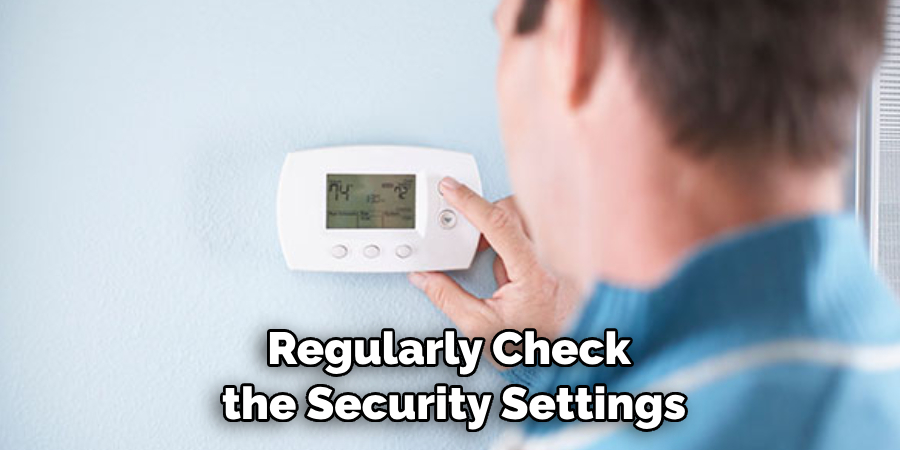
It’s important to regularly check the security settings on your thermostat, especially if you live in an area with a high risk of break-ins. The frequency of checks will depend on the type of security system installed on your thermostat and how often it is used. If you have a particularly sensitive one, like those found in hotels or offices, then it is best to check the security settings every few days or once a week. If your thermostat is rarely used, then it may be sufficient to check the security settings once a month.
In addition to regularly checking the security settings, you should also make sure that all of the other devices connected to your thermostat are also secure. This includes any Wi-Fi enabled devices, such as phones or tablets, as well as any physical locks that are installed.
It’s also a good idea to make sure that all of the passwords associated with your thermostat are kept secure and updated regularly. By taking these extra steps to ensure the security of your thermostat, you can help keep your home safe from unwelcome guests.
Are There Any Risks Associated With Leaving a Thermostat Unlocked for an Extended Period of Time?
In most cases, no. Most thermostats are designed to be left unlocked for an extended period of time without any risks. However, there is always the potential for someone tampering with a thermostat when it is not secured in some way. If you are concerned about your thermostat being tampered with while you’re away from home or at night, you may want to consider taking some additional steps to protect your thermostat.
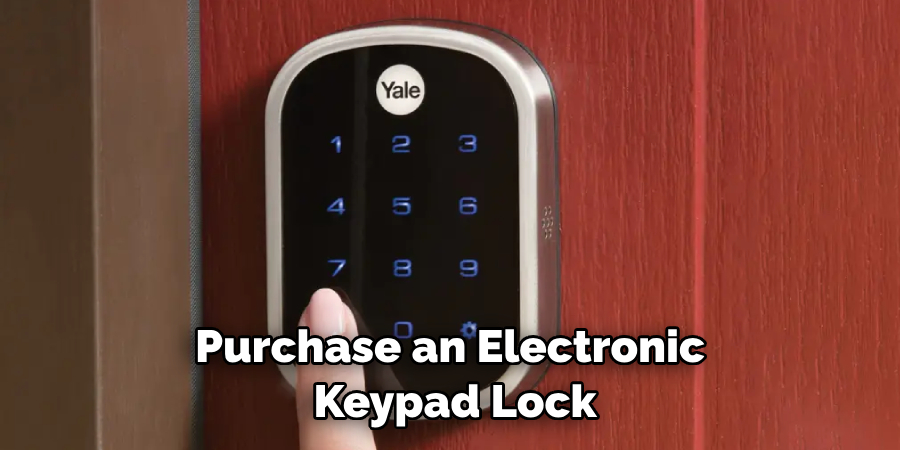
One way to do this is by investing in a simple lock box or case for your thermostat. These cases are available at most hardware stores, and they provide an extra layer of security against tampering. You can also purchase an electronic keypad lock that will allow you to secure your thermostat with a unique code.
If you choose to use a lock box or keypad lock, make sure that it is installed securely so that it cannot be easily removed or opened. Another way to ensure the safety of your thermostat is by programming it with certain settings and restrictions that will not allow anyone else to make changes without your authorization.
Conclusion
In conclusion, locking a thermostat is an important step for keeping the temperature in a house or office consistent. This helps to ensure that everyone is comfortable and energy bills are not too high. It can be done either with a physical lock on the thermostat, or through software that will secure it from potential tampering.
Whichever method you choose, make sure to follow the instructions properly, as this will ensure that your thermostat is secure. With the proper precautions taken, you can be sure that your temperature settings are kept safe and everyone can enjoy a pleasant atmosphere. I hope this article has been beneficial for learning how to lock thermostat. Make Sure the precautionary measures are followed chronologically.
About
Safety Fic is a distinguished figure in the world of Diy design, with a decade of expertise creating innovative and sustainable Diy solutions. His professional focus lies in merging traditional craftsmanship with modern manufacturing techniques, fostering designs that are both practical and environmentally conscious. As the author of diy, Safety Fic delves into the art and science of Safety Fic-making, inspiring artisans and industry professionals alike.
Education RMIT University
(Melbourne, Australia) Associate Degree in Design (Safety Fic) Focus on sustainable design, industry-driven projects, and practical craftsmanship. Gained hands-on experience with traditional and digital manufacturing tools, such as CAD and CNC software.
Nottingham Trent University
(United Kingdom) Bachelor’s in diyfastly.com and Product Design (Honors) Specialized in product design with a focus on blending creativity with production techniques. Participated in industry projects, working with companies like John Lewis and Vitsoe to gain real-world insights.
Publications and Impact
In diy, Safety Fic his insights on indoor design processes, materials, and strategies for efficient production. His writing bridges the gap between artisan knowledge and modern industry needs, making it a must-read for both budding designers and seasoned professionals.
